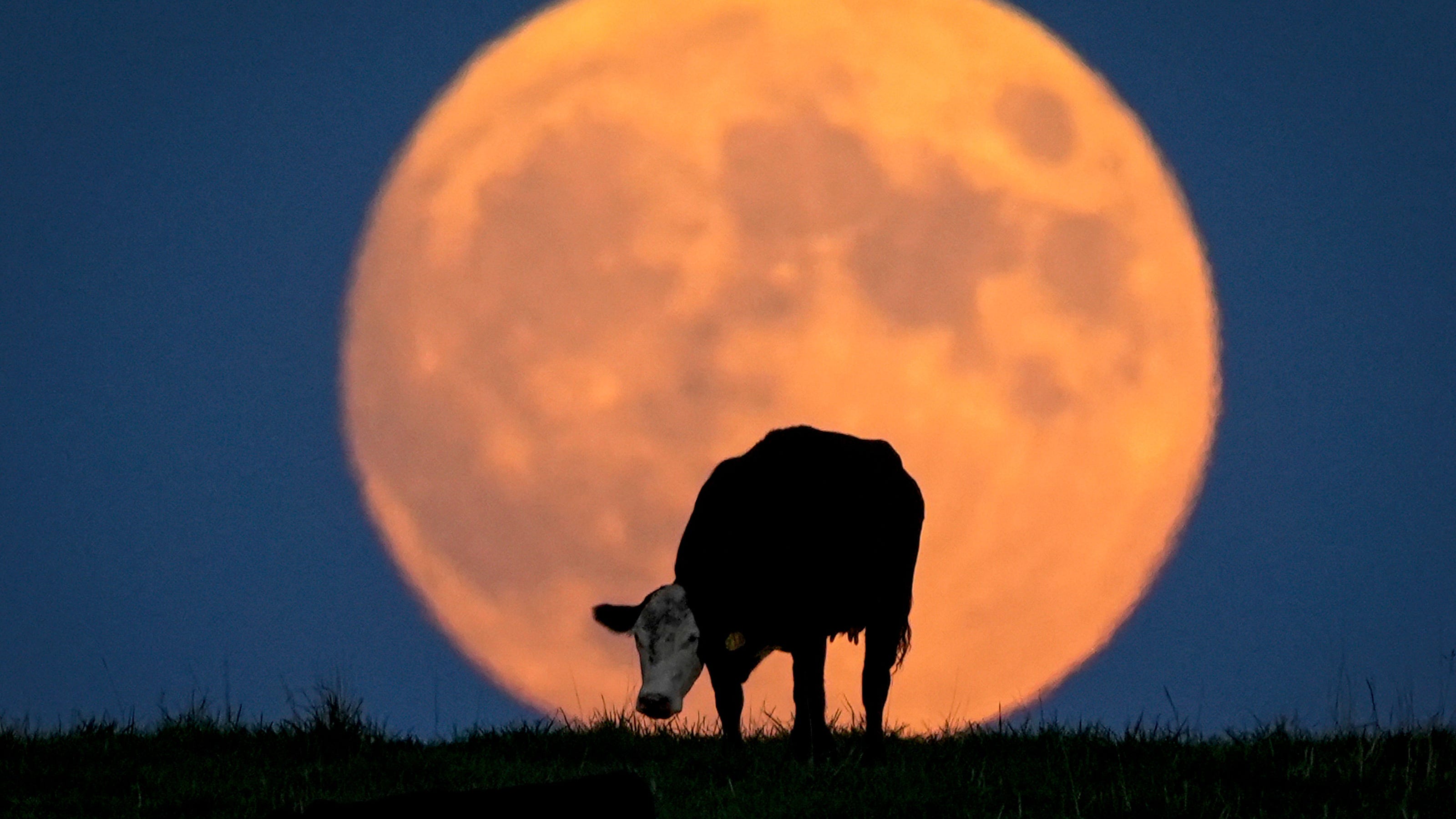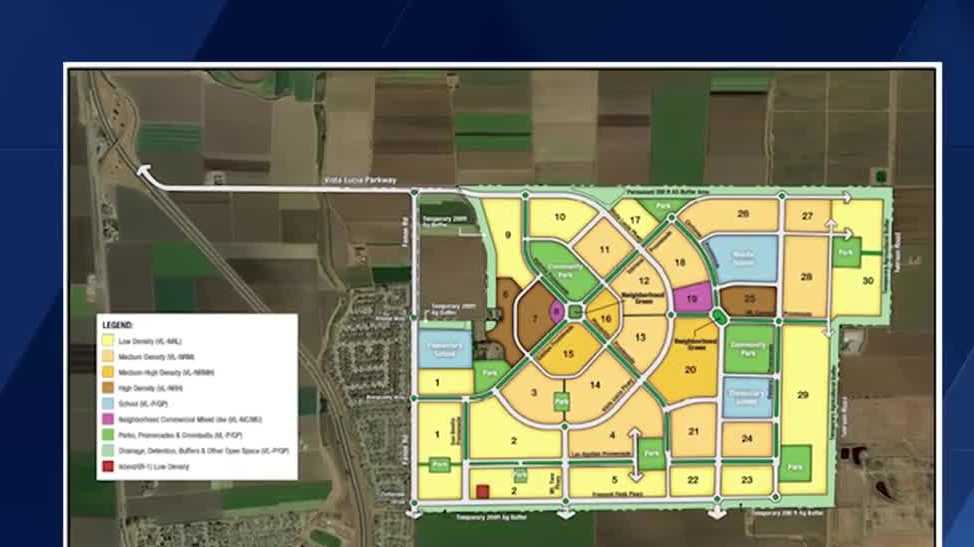What Is A Corn Moon? Observing September's Full Moon

Welcome to your ultimate source for breaking news, trending updates, and in-depth stories from around the world. Whether it's politics, technology, entertainment, sports, or lifestyle, we bring you real-time updates that keep you informed and ahead of the curve.
Our team works tirelessly to ensure you never miss a moment. From the latest developments in global events to the most talked-about topics on social media, our news platform is designed to deliver accurate and timely information, all in one place.
Stay in the know and join thousands of readers who trust us for reliable, up-to-date content. Explore our expertly curated articles and dive deeper into the stories that matter to you. Visit Best Website now and be part of the conversation. Don't miss out on the headlines that shape our world!
Table of Contents
What is a Corn Moon? Observing September's Full Moon
The September full moon, often called the Corn Moon, holds a special place in the hearts of skywatchers and harvest enthusiasts alike. But what exactly is a Corn Moon, and what makes this celestial event so captivating? Let's delve into the fascinating history and science behind this autumnal spectacle.
The Harvest Moon and its Cousin, the Corn Moon:
Many are familiar with the Harvest Moon, the full moon closest to the autumnal equinox. This moon is renowned for its unusually long period of nighttime illumination, offering farmers crucial extra hours of light to complete their harvests. While often used interchangeably, the Corn Moon is specifically the full moon occurring in September. The name reflects the timing of the corn harvest in many parts of North America, where the ripening corn stalks were often illuminated by the full moon's glow. This connection to agriculture makes the Corn Moon a particularly symbolic event for many cultures.
Why is it called the Corn Moon? A Look at its Names and History:
The names given to full moons often have deep-rooted historical significance. Native American tribes, in particular, developed a rich tradition of naming moons based on seasonal changes and agricultural cycles. The term "Corn Moon" perfectly encapsulates the connection between the September full moon and the crucial harvest of corn. Other names for the September moon include the Barley Moon and the Fruit Moon, all reflecting the abundance of the late summer and early autumn harvest. These variations highlight the regional differences in agricultural practices and the resulting moon-related folklore.
Observing the Corn Moon: Tips for Skywatchers:
September offers a prime opportunity for moon gazing. Here are some tips for observing the Corn Moon:
- Find a dark location: Light pollution significantly reduces the visibility of celestial objects. Escape city lights and head to a rural area for the best viewing experience.
- Check the moonrise time: Knowing when the moon rises in your area allows you to plan your observation accordingly. Numerous astronomy apps and websites provide accurate moonrise and moonset times based on your location.
- Use binoculars or a telescope (optional): While the full moon is easily visible with the naked eye, binoculars or a telescope can reveal more detail on the lunar surface, such as craters and maria.
- Capture the moment: Photography enthusiasts can try capturing stunning images of the Corn Moon. A tripod is recommended to avoid blurry pictures.
The Science Behind the Corn Moon:
The Corn Moon, like all full moons, occurs when the sun, Earth, and moon are aligned, with the Earth positioned between the sun and the moon. This alignment causes the sun's light to fully illuminate the moon's surface, resulting in the bright, full orb we see in the night sky. The slightly longer period of illumination during the Harvest Moon (which sometimes coincides with the Corn Moon) is due to the moon's path across the sky at this time of year and its angle relative to the horizon.
Beyond the Corn Moon: Exploring Autumn's Night Sky:
While the Corn Moon is a highlight of September's night sky, autumn offers plenty more to observe. Look out for the planets visible to the naked eye, such as Jupiter and Saturn, and keep an eye out for meteor showers that often grace the autumn skies. Consider joining a local astronomy club or attending a stargazing event to enhance your celestial viewing experience.
Conclusion:
The September Corn Moon offers a captivating blend of natural beauty and rich cultural history. So, take some time this September to appreciate this celestial event and its connection to the agricultural heritage of many cultures. Happy moon gazing!

Thank you for visiting our website, your trusted source for the latest updates and in-depth coverage on What Is A Corn Moon? Observing September's Full Moon. We're committed to keeping you informed with timely and accurate information to meet your curiosity and needs.
If you have any questions, suggestions, or feedback, we'd love to hear from you. Your insights are valuable to us and help us improve to serve you better. Feel free to reach out through our contact page.
Don't forget to bookmark our website and check back regularly for the latest headlines and trending topics. See you next time, and thank you for being part of our growing community!
Featured Posts
-
 Humanitarian Crisis Deepens Gaza City Families Desperate To Escape Attacks
Sep 04, 2025
Humanitarian Crisis Deepens Gaza City Families Desperate To Escape Attacks
Sep 04, 2025 -
 Downton Shabby Us Filmmaker Locked In Legal Battle
Sep 04, 2025
Downton Shabby Us Filmmaker Locked In Legal Battle
Sep 04, 2025 -
 Jordan Peeles Next Film A 2026 Release Date No Longer Confirmed By Universal
Sep 04, 2025
Jordan Peeles Next Film A 2026 Release Date No Longer Confirmed By Universal
Sep 04, 2025 -
 2026 Release Date Pulled For Jordan Peeles Upcoming Film
Sep 04, 2025
2026 Release Date Pulled For Jordan Peeles Upcoming Film
Sep 04, 2025 -
 The Search For Musa Al Sadr A Libyan Mortuary Holds A Potential Clue
Sep 04, 2025
The Search For Musa Al Sadr A Libyan Mortuary Holds A Potential Clue
Sep 04, 2025
Latest Posts
-
 Is Southwest Airlines Free Wi Fi Really Free A Critical Analysis
Sep 05, 2025
Is Southwest Airlines Free Wi Fi Really Free A Critical Analysis
Sep 05, 2025 -
 Kim Jong Uns Daughters Debut On The World Stage Breaking Down The Visit
Sep 05, 2025
Kim Jong Uns Daughters Debut On The World Stage Breaking Down The Visit
Sep 05, 2025 -
 Affordable Housing Victory Gonzales Backs Vista Lucia Project
Sep 05, 2025
Affordable Housing Victory Gonzales Backs Vista Lucia Project
Sep 05, 2025 -
 Color Theories Julio Torres Off Broadway Debut September 3rd
Sep 05, 2025
Color Theories Julio Torres Off Broadway Debut September 3rd
Sep 05, 2025 -
 Top 25 College Football Teams First Impressions And Power Rankings
Sep 05, 2025
Top 25 College Football Teams First Impressions And Power Rankings
Sep 05, 2025
